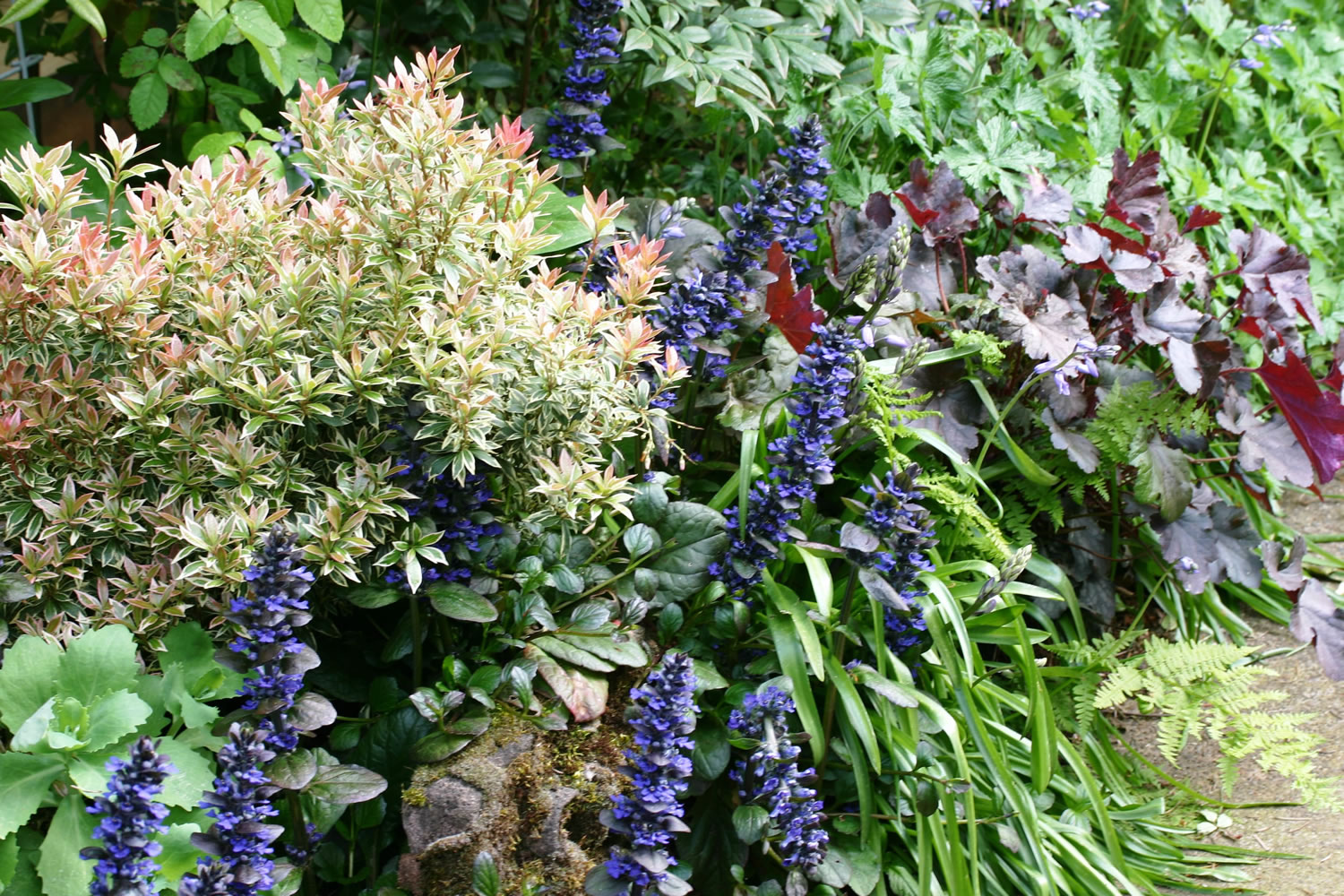Every year, the month of May arrives like a long-lost friend who has come to pay a visit. We are excited by their arrival but thrown a bit off-balance by the amount of baggage they have in tow. It’s wonderful to renew the friendship but it appears that this guest is here for an extended stay. All of a sudden we have to pick up the pace just to stay in place.
For me, May certainly seems like the busiest time in the gardening year. The recently dormant lawn needs regular mowing. Weeds that were non-existent a month ago are ready to set seed. The rhododendron is in full bloom one day and needs to have its sticky, spent flower heads removed the next. At this time of year, one garden chore leads to another.
Certain garden jobs, left undone, will show up in plant damage in coming seasons. Pest infestation and disease need to be dealt with in a timely manner. Clean up old leaves and debris at the base of any roses with black spot or dogwood trees suffering with anthracnose before new growth can be tainted by the lingering disease. At this point, many gardeners ask me how to use a fungicide or pesticides in the garden and I always ask them to begin at the beginning before using chemicals.
The first step is to determine whether or not you actually need to use a fungicide. Many symptoms of plant problems can be caused by other issues. The solution can rarely be determined with one question and one answer. First, ask an expert at the nursery where you bought your plant or call the WSU master gardeners at our Clark County agricultural extension office: 360-397-6060, ext. 7725. At the very least, if you use a fungicide, remember to read the label first and then spray according to instructions.
Some chores are more lenient than others, but still need to be dealt with in the current season. You can miss a lawn mowing and still have a beautiful lawn, but it will require more steps. If you get caught without mowing and then hit by two weeks of warm rain, you will probably have to mow twice on the next outing. Mow once on a high setting and again, a day or two later, on a lower setting.
While you’re out working in beds and borders, put wire plant grids and other supports into place early so that tall growing perennials can grow up through them. One of the easiest stakes to use is the flexible Y-stake. The support portion of the stake is a very sturdy, hollow metal tube with a pointed end that pushes easily into the soil. At the top, two flexible arms wrap around a plant as loosely or as firmly as you choose. With experience you will learn which jobs become more difficult the longer you put them off.
If you want your perennial border plants to be shrubbier rather than taller, try pinching out the tips of plants as they grow. Each time you pinch off the tip, more growth is encouraged from that point. The plant will send out more side shoots that help establish a bushier shape than if they were left alone. Fuchsias are a good example. If you snip out the growing tip of the main shoots, more side shoots will develop and the mature plant will have a more rounded, sturdy silhouette.
If you have established rhododendrons, azaleas, or camellias in the garden, fertilize them after their spring bloom. Use an acid-based fertilizer designed specifically for flowering broadleaf evergreens. As early-blooming trees and shrubs finish flowering, prune to shape. If the ground has warmed up you can also add a layer of mulch to help maintain soil warmth, inhibit weed growth and hold water in the soil. It’s time to feed all of your spring-flowering bulbs, roses and emerging perennial plants with a general purpose organic fertilizer.
Fertilize bulbs as the flowers fade and begin to deadhead early blooming perennials. Organic materials serve as both fertilizer and soil conditioner, ultimately feeding both the soil and the plants. The best way to encourage a second flush of flowers on perennial border plants is to pinch out spent flower heads. Pinch back fall-flowering plants like chrysanthemums, garden phlox and asters so they grow more compact and bushier before blooming. It’s a good thing the days are growing longer or we’d never have time to get to every spring chore.
In May, a gardener’s work is never done. All the more reason to be out in the garden.



